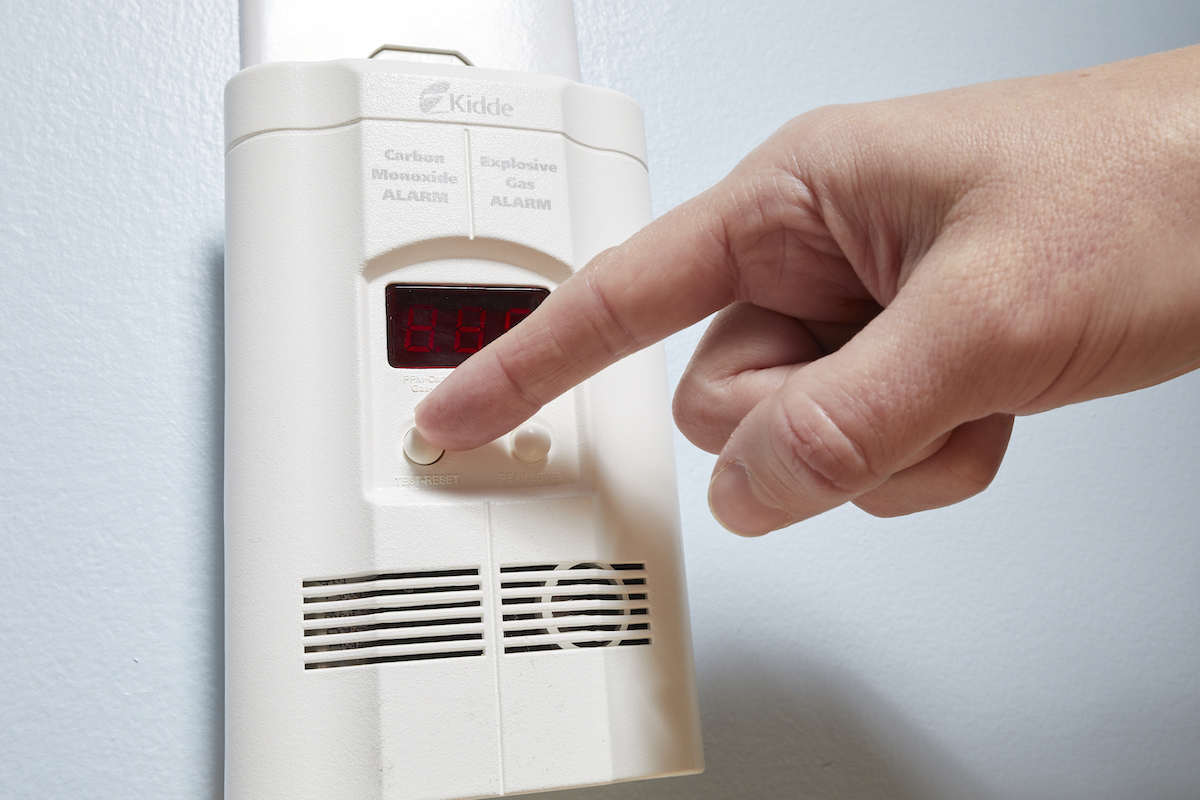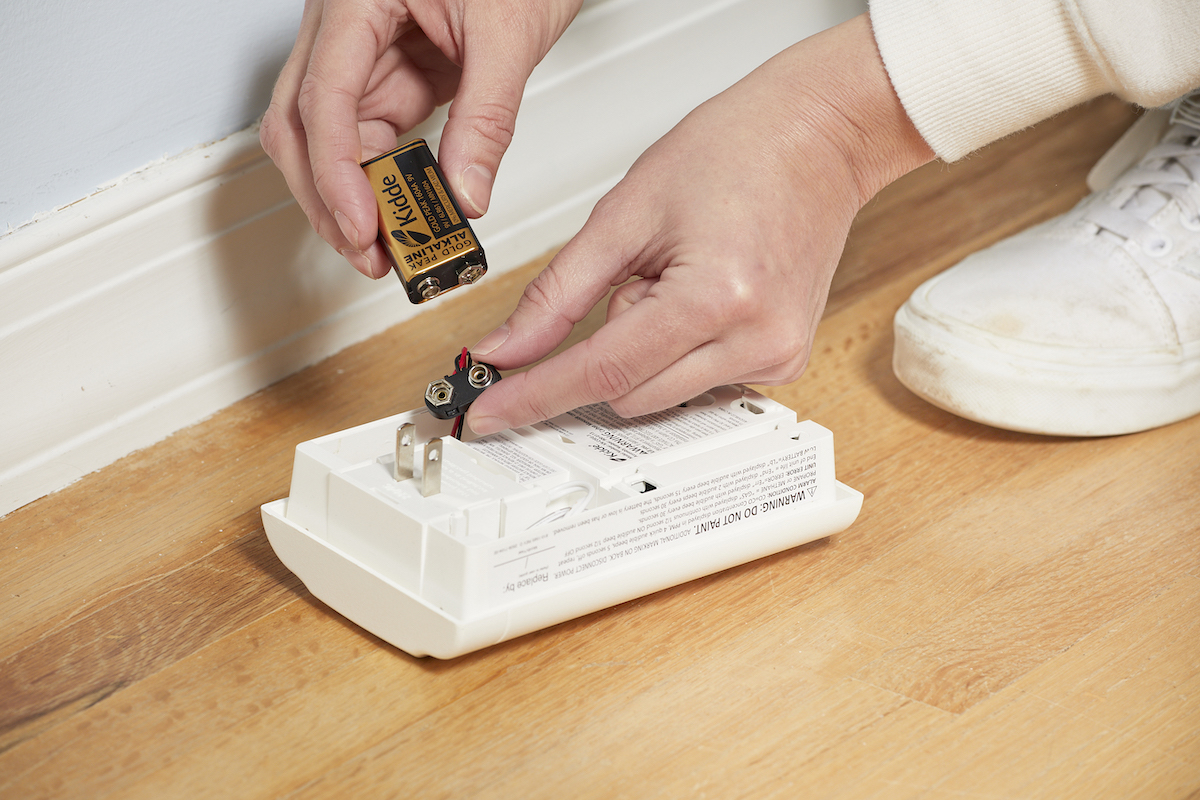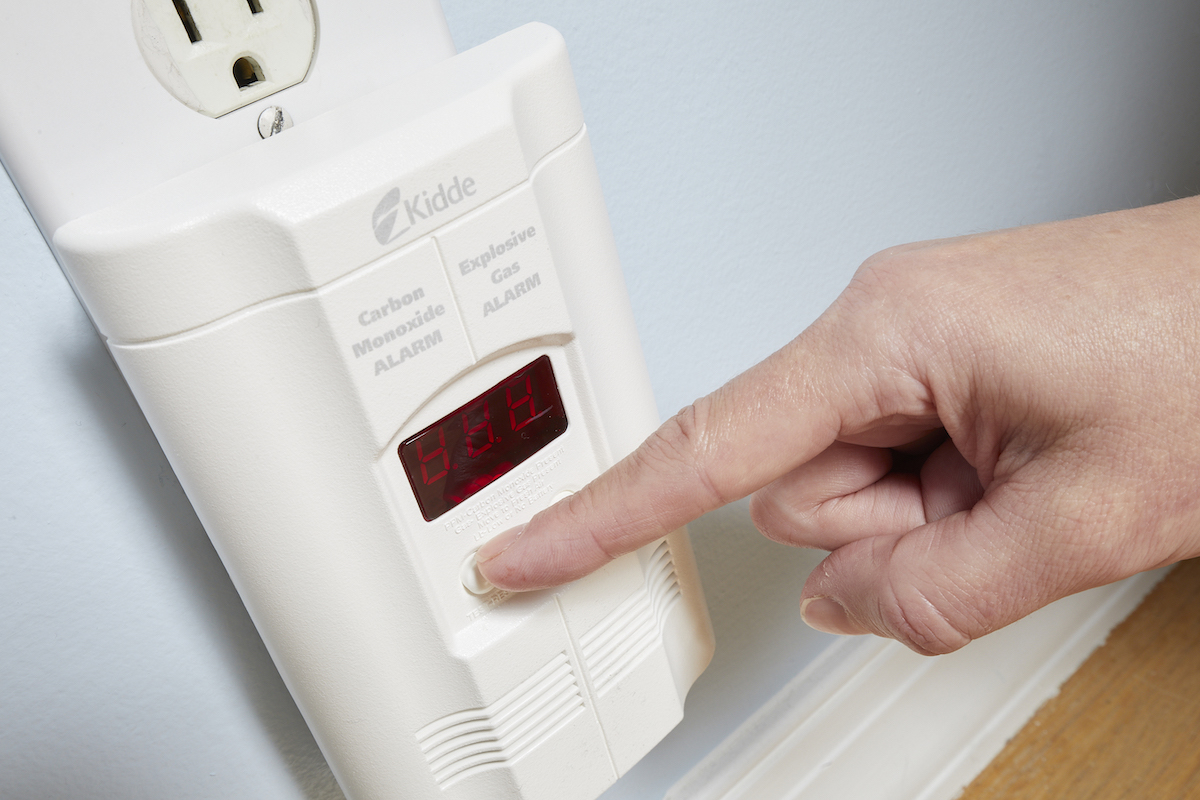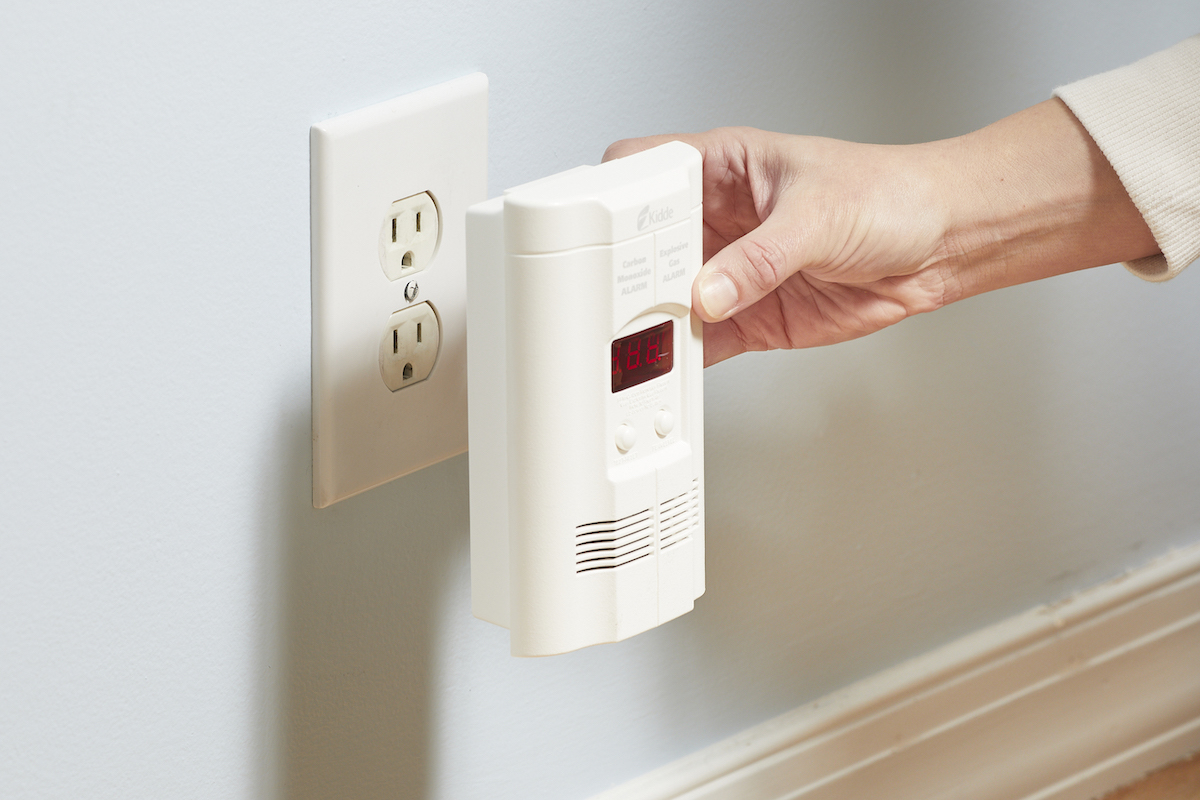

We may earn revenue from the products available on this page and participate in affiliate programs. Learn More ›
Your carbon monoxide detector is beeping for one of three reasons:
- It’s detecting a dangerous level of carbon monoxide
- The unit is no longer functioning properly and needs to be replaced
- Low battery
You can identify which of the three causes it is by decoding the pattern of beeps and chirps you hear. Having this knowledge will help you know whether there’s a serious issue to take care of, or if you just need to swap out some old equipment. Here’s how to speak your carbon monoxide detector’s language, and what you should do once you decipher its message.
How Carbon Monoxide Detectors Work
Unlike smoke, which you can detect using your senses of sight and smell, carbon monoxide is completely invisible and has no odor, which is why it’s so dangerous.
According to the Environmental Protection Agency, the carbon monoxide levels in an average home are between 0.5 and 5 parts per million for homes without gas stoves and a concentration of 5 ppm to 15 ppm for those with gas stoves. Both of these levels are considered safe.
Levels above 70 ppm will start to cause headaches, fatigue, and nausea, eventually leading to unconsciousness and even death. The higher the concentration of carbon monoxide, the faster it can overwhelm those exposed to it.
The most common type of carbon monoxide detectors use an electrochemical sensor that reacts with carbon monoxide gas to generate an electrical current. The detector measures this current and triggers an alarm when it reaches a certain threshold.
How quickly carbon monoxide (or CO) will set off your detector depends on the concentration of the gas. A concentration of 70 to 80 ppm of CO will set off a carbon monoxide detector if those levels linger for about 2 hours, according to the National Institute of Standards and Technology. A much higher concentration of 400 ppm would set off the detector in a matter of minutes.
Decoding Carbon Monoxide Detector Beeps

A carbon monoxide detector communicates through a series of R2-D2-like beeps and chirps to let you know when it detects dangerous levels of carbon monoxide, when the battery is low, and when the unit is nearing the end of its life. Deciphering the pattern of beeps is crucial to understanding what your CO detector is trying to tell you, so you can make the right response.
Keep in mind that the pattern of beeps, chirps, and alarms can vary from brand to brand, so consult the manufacturer’s instructions for details on interpreting your unit’s beeps.
Here are the three common sounds you’ll hear:
Single Chirp
As with a smoke detector, a carbon monoxide detector chirping just once means that the battery in the carbon monoxide detector is low and needs to be changed. Stay safe and change the battery right away.
How frequently you need to change the batteries in your carbon monoxide detector will depend on the type you have installed.
- Hardwired options only use the battery as a backup, and you should be able to simply replace it once a year for maintenance.
- Standalone devices use battery power at all times. It’s good practice to replace these batteries every 6 to 12 months and avoid waiting for the low battery beep altogether.
- Some new detectors with sealed lithium batteries can last up to 10 years. So, homeowners simply need to pay attention to when the device tells you it needs to be replaced.
Three Beeps
For a carbon monoxide alarm beeping three times consecutively every 15 minutes or four beeps every 5 minutes (depending on the manufacturer), then the CO detector is letting you know that it’s malfunctioning and needs to be replaced. Most CO detectors last about 5 years. Remove the old unit and install a new CO detector as soon as possible.
Continuous Alarm
When the carbon monoxide detector emits a continuous alarm or a set of four beeps in rapid succession, it has detected dangerous levels of carbon monoxide in the air. Exit the building and find fresh air immediately, then call 911 for help.
Resetting Your Carbon Monoxide Detector

Once the threat is over and the air quality in your home has returned to safe levels, you’ll need to reset the CO detector to put it back into service. Doing so will shut off the alarm and clear the carbon monoxide readings from the detector’s sensors so it can resume monitoring your home.
- Look for the detector’s reset/test button on its faceplate.
- Press and hold the reset button for 5 to 10 seconds to turn off the alarm and reset the unit.
- Some CO detectors will reset themselves automatically after sounding for about 10 to 15 minutes.
If the CO detector alarm goes off after you’ve reset it, this means that CO levels are still high in your home. Evacuate to fresh air immediately and call 911 to help you find the source of the carbon monoxide.
How to Stop a Carbon Monoxide Alarm from Beeping
Regularly inspect, test, and maintain carbon monoxide detectors.
Given how poisonous carbon monoxide is and how difficult it is to detect on your own, your carbon monoxide detector is among the most crucial pieces of safety equipment in your home, especially if you have gas-powered appliances.
With that in mind, it’s critical that you test your carbon monoxide sensor about once a week.
- Hold down the test/reset button on the detector for about 5 seconds to test it.
- If it’s working properly, the unit should emit the same sound that it makes when it detects high carbon monoxide levels.
- If the detector fails to beep while you’re testing it, change the batteries and try again.
Along with testing your CO detector, keep it in good working order by wiping off any dust using a dry, soft cloth.
Finally, don’t wait for your CO detector to let you know when the battery is low. Instead, change the battery every 6 to 12 months whether or not you hear your carbon monoxide detector chirping.
Ensure proper installation to reduce false alarms.

If your carbon monoxide detector is going off randomly and you’re certain there isn’t any carbon monoxide in the air, then it probably isn’t installed in the ideal location. Make sure your carbon monoxide detector is at least 15 feet away from any appliances that burn fossil fuels, such as gas furnaces and stoves. High humidity can also cause a CO detector to go off, so avoid installing them in bathrooms with showers or tubs.
Keep in mind that what you think is a false carbon monoxide alarm may be all too real. Check your gas-burning appliances to make sure they’re working properly. The pilot light and burner on these appliances should burn blue. Any yellow in the flame is a sign that the fuel isn’t burning completely, and this causes the appliance to create carbon monoxide. Turn off the burner and call your gas company’s gas leak hotline to help you fix the problem.
FAQs
Carbon monoxide is particularly dangerous because it is a colorless, orderless, and tasteless gas that can cause serious health problems when inhaled.
This depends on the CO detector you have installed. Generally speaking, most models will need to be replaced every 5 to 7 years, but users should refer to the manufacturer’s guidelines for their own unit.
Carbon monoxide detectors should be installed on every level in the home (including the basement) and especially near sleeping areas. Keep in mind that they should be placed at least 5 feet above the floor since carbon monoxide is lighter than air and will rise with warm air.
Battery-operated carbon monoxide detectors are relatively simple to install, and as long as you follow the manufacturer’s advice on where best to place them, it should be straightforward for most people.
Hardwired units that require electrical work may be trickier to install, especially for inexperienced DIYers, so consider hiring a professional for peace of mind.
There are also advanced features like interconnected systems or integration with a home security system that you may wish to consider (which may complicate the installation process).
